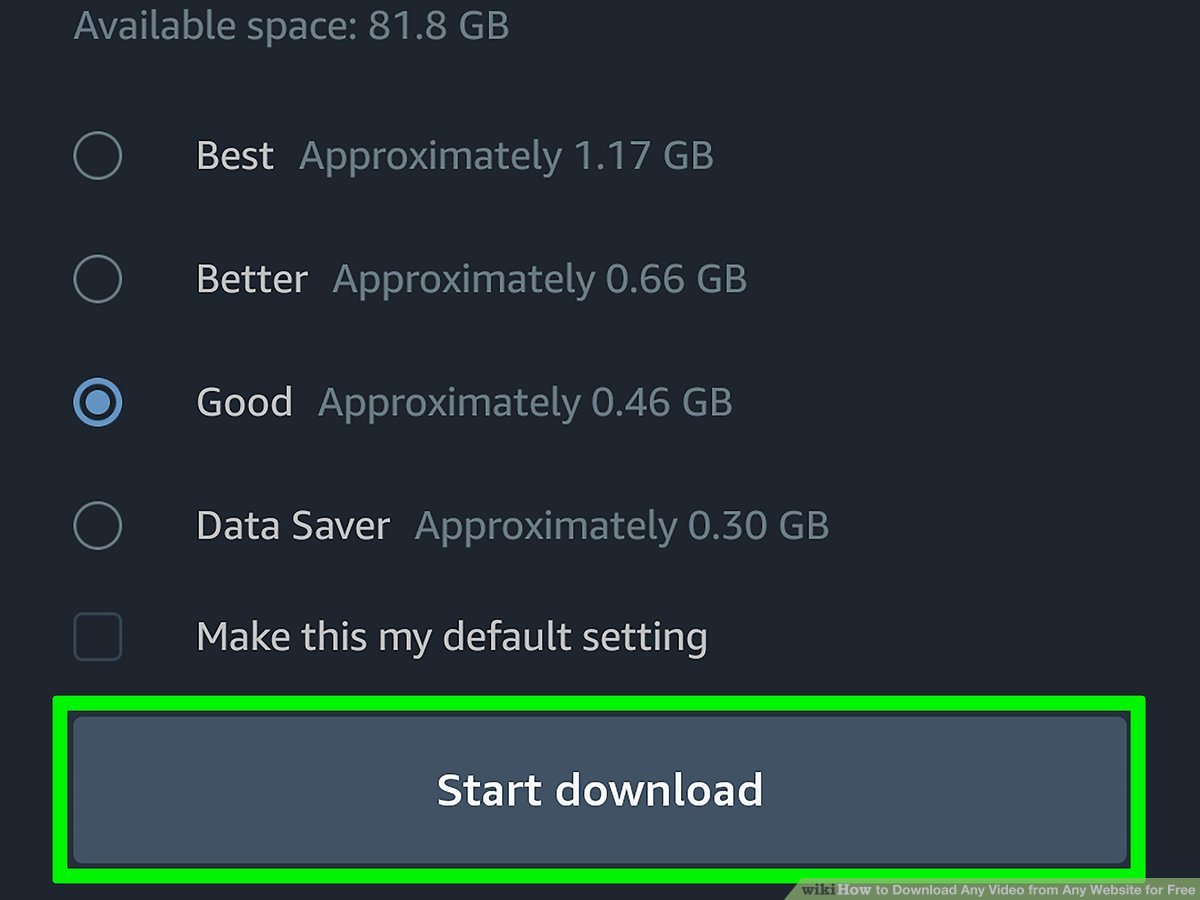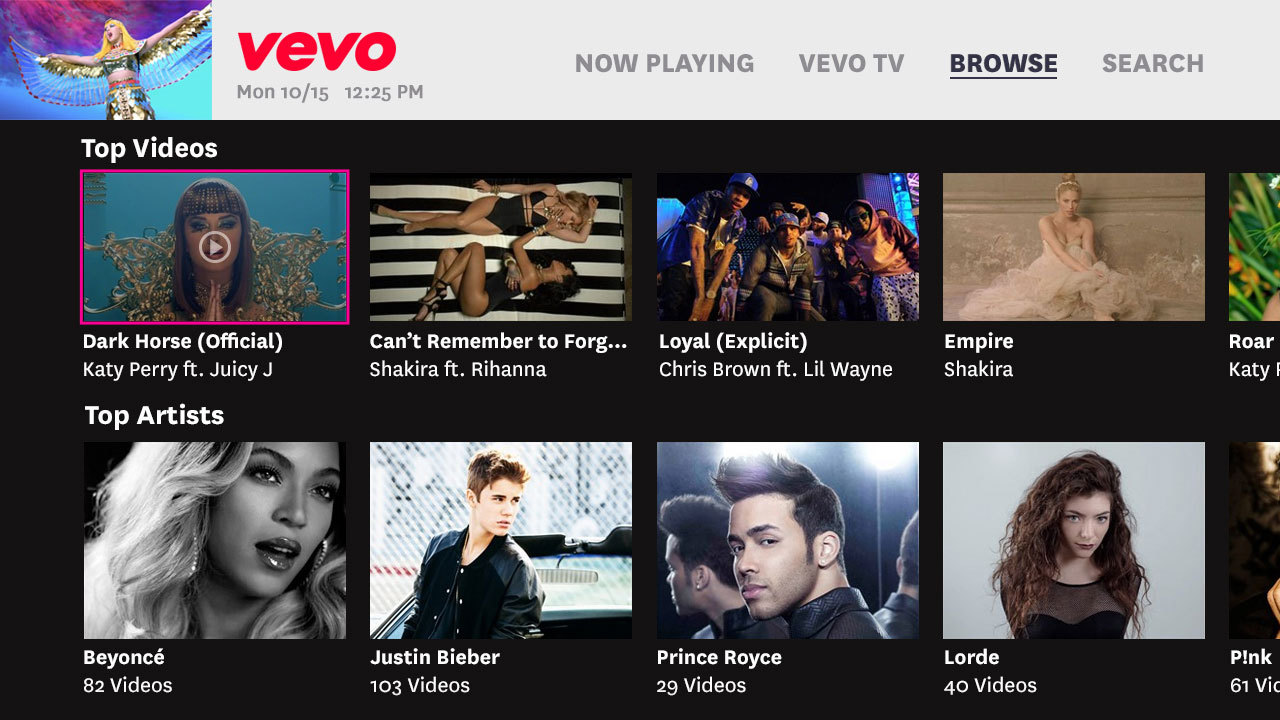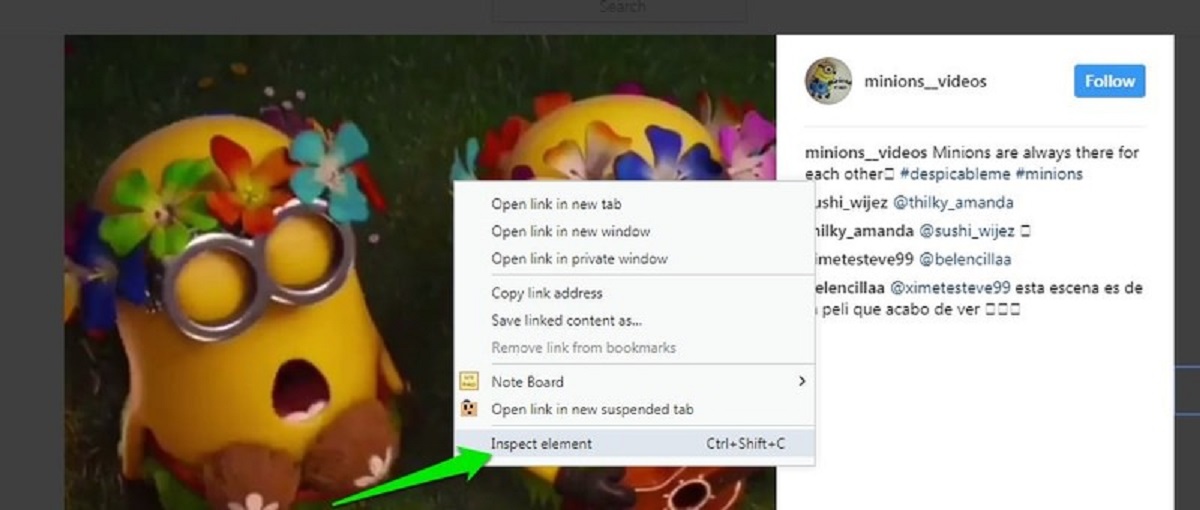Introduction
With the multimedia-rich web landscape that we have today, it’s no surprise that you come across amazing videos on various websites. Whether it’s a captivating music video, an insightful TED talk, a hilarious viral clip, or an informative tutorial, you might find yourself wanting to download these videos for offline viewing or future reference.
Downloading videos from the web can be a useful skill to have, as it allows you to save and enjoy your favorite content anytime, even without an internet connection. However, it’s important to note that not all websites offer a direct download option for their videos. In such cases, you need to find alternative methods to download the videos.
This article will provide you with several methods to download videos from the web. From online video downloaders to browser extensions, software applications to inspecting web page source code, and even screen recording, we’ll explore various techniques that cater to different situations and preferences.
Before we dive into the methods, it’s crucial to understand the various video formats you may encounter on the web. Videos can be found in a range of formats, such as MP4, AVI, FLV, MOV, and more. Different websites may host videos in different formats, and you’ll need to ensure that your chosen method supports the format you’re trying to download.
Keep in mind that downloading videos from the web may have legal implications, depending on the content and your jurisdiction. Make sure to respect copyright laws and only download videos that you have the right to access and save.
Now, let’s explore the different methods you can use to download videos from the web, depending on your needs and the options available to you.
Understanding Video Formats
Before diving into the methods of downloading videos from the web, it’s important to have a basic understanding of video formats. When you encounter a video on a website, it is likely to be in a specific format that determines how the video data is encoded and compressed.
Some common video formats you may come across include MP4, AVI, FLV, MOV, WMV, and MKV. Each format has its own advantages and compatibility considerations. Let’s take a closer look at a few popular video formats:
- MP4 (MPEG-4): This is one of the most widely used video formats and is supported by a wide range of devices. MP4 videos offer excellent quality while maintaining a relatively small file size. It is compatible with most media players and devices, making it a popular choice for web videos.
- AVI (Audio Video Interleave): AVI is another popular video format that was widely used in the past. It provides good video and audio quality but tends to result in larger file sizes compared to more modern video formats.
- FLV (Flash Video): FLV is a video format primarily associated with Adobe Flash Player. However, it is becoming less prevalent as Flash technology is being phased out. Most modern devices and browsers may not have native support for FLV videos.
- MOV (QuickTime Movie): MOV is a video format developed by Apple and is commonly used for videos captured on iOS devices. It offers high-quality video and audio and is well supported on Apple devices and QuickTime Player.
- WMV (Windows Media Video): WMV is a video format developed by Microsoft and is commonly associated with Windows Media Player. It is compatible with Windows-based devices and offers good compression with decent video quality.
- MKV (Matroska Video): MKV is an open-source video format that supports multiple audio, video, and subtitle streams within a single file. It is known for its flexibility in handling different types of media and is becoming increasingly popular.
When downloading videos from the web, it’s important to choose a method that supports the video format you’re dealing with. Some methods may have limitations on the formats they can handle, so it’s crucial to check compatibility before proceeding with the download.
Knowing the different video formats and their characteristics will help you select the appropriate method for downloading videos, ensuring that you can enjoy your downloaded content on the devices and media players of your choice.
Method 1: Using Online Video Downloaders
Online video downloaders are convenient and user-friendly tools that allow you to download videos directly from websites without installing any additional software. These platforms usually work by extracting the video URL from the webpage and providing you with download links in various formats and quality options.
To use an online video downloader:
- Find the webpage containing the video you want to download.
- Copy the URL of the video page.
- Visit an online video downloader website. Popular options include SaveFrom.net, KeepVid, and ClipConverter.
- Paste the video URL into the provided field on the downloader website.
- Select the desired video format and quality option.
- Click on the download button to start the download.
It’s important to note that online video downloaders may have limitations depending on the website and the video format you’re trying to download. Some platforms may not support certain websites or be unable to extract videos from protected content.
Additionally, be cautious when using online video downloaders, as some websites may contain malicious advertisements or hidden malware. Stick to reputable and well-known online video downloader platforms to ensure the safety of your computer and personal information.
Online video downloaders offer a quick and hassle-free solution for downloading videos from the web without the need for any software installation. They are particularly useful if you only need to download videos occasionally and want a straightforward method to do so.
However, keep in mind that online video downloaders do not offer the same level of features and flexibility as software applications or browser extensions, which we’ll explore in the next sections. If you find yourself downloading videos frequently or need more advanced options, exploring these other methods might be a better choice.
Method 2: Downloading Videos Using Browser Extensions
If you prefer a more integrated and seamless solution for downloading videos, browser extensions can be a great option. These are small plugins or add-ons that you can install in your web browser, allowing you to download videos directly from the website you are visiting.
Browser extensions for video downloads are available for popular browsers such as Google Chrome, Mozilla Firefox, and Safari. They typically add a download button or an option in the right-click menu when you hover over a video, making it easy to initiate the download process.
To download videos using browser extensions:
- Open your web browser and go to the browser’s extension store.
- Search for a video download extension that is compatible with your browser.
- Select a reputable and well-reviewed extension.
- Click on the “Add to [Browser Name]” button to install the extension.
- Once the extension is installed, navigate to the webpage with the video you want to download.
- Click on the download button or right-click on the video and select the download option provided by the extension.
- Choose the desired video format and quality, if applicable.
- Start the download and wait for the video to be saved to your computer.
Browser extensions are generally easy to use and provide a quick way to download videos without the need to switch between different websites or applications. They often offer additional features, such as batch downloads, video conversion, and integration with popular video platforms like YouTube.
However, it’s important to note that some browser extensions may come with unwanted ads, tracking scripts, or even malware. To avoid such risks, make sure to review the extension’s ratings, read user reviews, and stick to well-known and reputable extensions from trusted sources.
Keep in mind that browser extensions may have limitations depending on the website and video format you’re trying to download. Some websites employ techniques to prevent video downloads or may use video streaming technologies that are not compatible with the extension.
Overall, browser extensions offer a convenient and integrated solution for downloading videos directly from your web browser. If you frequently download videos and want a seamless experience, exploring video download extensions for your preferred browser could be a worthwhile option.
Method 3: Downloading Videos with Software Applications
If you’re looking for more control and advanced features for downloading videos, software applications can be a powerful option. These applications are specifically designed to download videos from various websites and offer a wide range of customization options.
To download videos using software applications:
- Research and choose a reputable video download software that suits your needs. Some popular options include 4K Video Downloader, YTD Video Downloader, and Internet Download Manager (IDM).
- Download and install the software on your computer following the provided instructions.
- Open the video download software application.
- Navigate to the webpage that contains the video you want to download.
- Copy the video URL from the address bar of your browser.
- Paste the video URL into the software application’s interface or input field.
- Choose the desired video quality and format options.
- Initiate the download process and wait for the software to download the video onto your computer.
Software applications for video downloads often provide advanced features such as batch downloads, video conversion into different formats, and download speed control. Some applications also offer the option to download entire playlists or channels from platforms like YouTube.
One of the advantages of using software applications is that they can handle a wide range of video formats and are less reliant on the specific website you’re downloading from. They often provide support for popular formats such as MP4, AVI, WMV, and more.
It’s important to note that while software applications may offer more versatility and control, some options may require a purchase or come with limitations in their free version. Make sure to read the software’s documentation and reviews to understand any potential restrictions before using them.
Additionally, be cautious when downloading and installing software applications from the internet. Stick to reputable sources and ensure that you are downloading the software from the official website to avoid downloading malware or ad-filled versions.
Software applications are well-suited for users who download videos frequently and require more control over the download process. They provide a reliable and customizable solution for downloading videos, making them a great option for those seeking advanced features and flexibility.
Method 4: Downloading Videos by Inspecting Web Page Source Code
If you find that other methods aren’t working or you’re comfortable with a more technical approach, you can try downloading videos by inspecting the web page source code. This method involves finding the direct link to the video file within the page’s HTML source code and downloading it using a browser or download manager.
To download videos by inspecting web page source code:
- Open the web page that contains the video you want to download in your web browser.
- Right-click on the page and select “Inspect” or “Inspect Element” from the context menu. This will open the browser’s developer tools panel.
- In the developer tools panel, navigate to the “Network” or “Network Requests” tab.
- Refresh the web page to generate network requests.
- Look for the video file’s URL in the network requests list. It may have a specific file extension like .mp4 or .avi.
- Once you have found the video file URL, right-click on it and select “Open in a New Tab” or “Copy Link Address”. This will open the video file directly or copy the URL to your clipboard.
- In the new tab or with the copied URL, right-click on the video and select “Save Video As” or a similar option to download the video.
- Choose the desired download location and click “Save” to initiate the download process.
It’s important to note that this method requires some technical knowledge and familiarity with HTML and browser developer tools. It may not work on all websites, as some websites implement measures to prevent direct access to video files through this method. Additionally, the video file URL may not be easily identifiable or may require additional steps to extract it.
This method also relies on the video file being embedded within the web page and may not work for videos loaded dynamically or from streaming services that employ DRM (Digital Rights Management) protection.
Inspecting web page source code to download videos can be a useful option if other methods are not working or if you want a more hands-on approach. However, it is typically more time-consuming and may not be suitable for users who are less familiar with HTML and web development concepts.
Method 5: Recording Screen for Downloading Videos
When other methods fail or if you need to download a video that cannot be easily downloaded using traditional methods, screen recording can be an alternative solution. Screen recording involves capturing the content displayed on your screen, including the video you want to download, and saving it as a video file on your computer.
To download videos using screen recording:
- Open a screen recording software or app on your computer. Popular options include OBS Studio, Camtasia, and QuickTime Player (Mac).
- Adjust the recording settings, such as the area to capture, audio input, and video quality.
- Play the video you want to download in a web browser or media player.
- Start the screen recording and position the recording area to capture the video playback.
- Play the video in full screen or adjust the size of the video player to fit within the recording area.
- Wait for the video to finish playing or stop the screen recording when you have captured the desired portion.
- Save the screen recording as a video file on your computer.
Screen recording allows you to capture videos directly from your screen, including those that cannot be downloaded through conventional methods. It can be useful for downloading videos from streaming platforms or sites that implement measures to prevent direct downloading.
However, it’s important to note that screen recording may result in a loss of video quality compared to direct downloading. The audio and video may not be as crisp, and there may be occasional artifacts or lag depending on the recording software and your computer’s performance.
Screen recording is a handy option when other methods aren’t working or if you need a more flexible approach to download videos. However, it’s worth exploring other methods first, as they generally offer higher-quality downloads and are more efficient.
Furthermore, keep in mind that screen recording should be used responsibly and in compliance with copyright laws. Make sure you have the necessary rights to record and download the video content you are capturing.
Tips for Successful Video Downloads
When it comes to downloading videos from the web, here are some tips to ensure a successful and hassle-free experience:
- Choose the right method: Consider the video format, the website you’re downloading from, and your own preferences to determine the most suitable method for downloading videos.
- Keep your software updated: Whether you’re using online video downloaders, browser extensions, or software applications, make sure they are up-to-date to ensure compatibility with the latest websites and video formats.
- Watch out for copyright restrictions: Ensure that you have the appropriate rights and permissions to download the videos you are interested in. Respect copyright laws and avoid downloading copyrighted content without permission.
- Be cautious with online sources: When using online video downloaders or browsing for browser extensions or software applications, stick to reputable sources to avoid downloading malicious software or compromising your computer’s security.
- Check video quality and format: Before initiating a download, verify that the selected method supports the video quality and format you desire. Some methods or platforms may have limitations on the supported resolutions or formats.
- Prioritize video sources: If you’re having difficulty downloading a video from a specific website, consider searching for alternative sources that provide the same content. Different websites may have different methods of video delivery and accessibility.
- Consider your internet connection: Downloading videos can be bandwidth-intensive, so ensure that your internet connection is stable and capable of handling large file downloads. A slow or unreliable internet connection may result in interrupted or failed downloads.
- Respect terms of use and privacy policies: When using specific platforms or software, adhere to the terms of use, privacy policies, and any usage restrictions. This will prevent any potential legal consequences and protect your own privacy.
- Backup your downloaded videos: After successfully downloading videos, consider creating backups on external storage devices or cloud storage to prevent data loss in case of computer issues or accidental deletion.
By following these tips, you can improve your success rate and have a smoother experience when downloading videos from the web.
Conclusion
Downloading videos from the web can be a useful skill to have, allowing you to save and enjoy your favorite content offline or share it with others. In this article, we explored different methods for downloading videos, including online video downloaders, browser extensions, software applications, inspecting web page source code, and screen recording.
Online video downloaders provide a convenient option for occasional video downloads, while browser extensions offer an integrated and seamless solution within your web browser. Software applications offer advanced features and flexibility, while inspecting web page source code allows for a more technical approach. Screen recording can be a versatile method for capturing videos that other methods cannot handle.
Understanding video formats is important when choosing the appropriate method, as different websites and platforms may use specific formats that affect compatibility and quality. It’s crucial to respect copyright laws and ensure that you have the necessary rights to download the videos you are interested in.
When downloading videos, keep your software updated, be cautious with online sources, and consider factors such as video quality, internet connection, and backup options. Following these tips will help you have a successful and enjoyable video downloading experience.
Remember to use these methods responsibly and adhere to the terms of use and privacy policies of the platforms or software you use. By doing so, you can make the most of the wealth of video content available on the web.

























